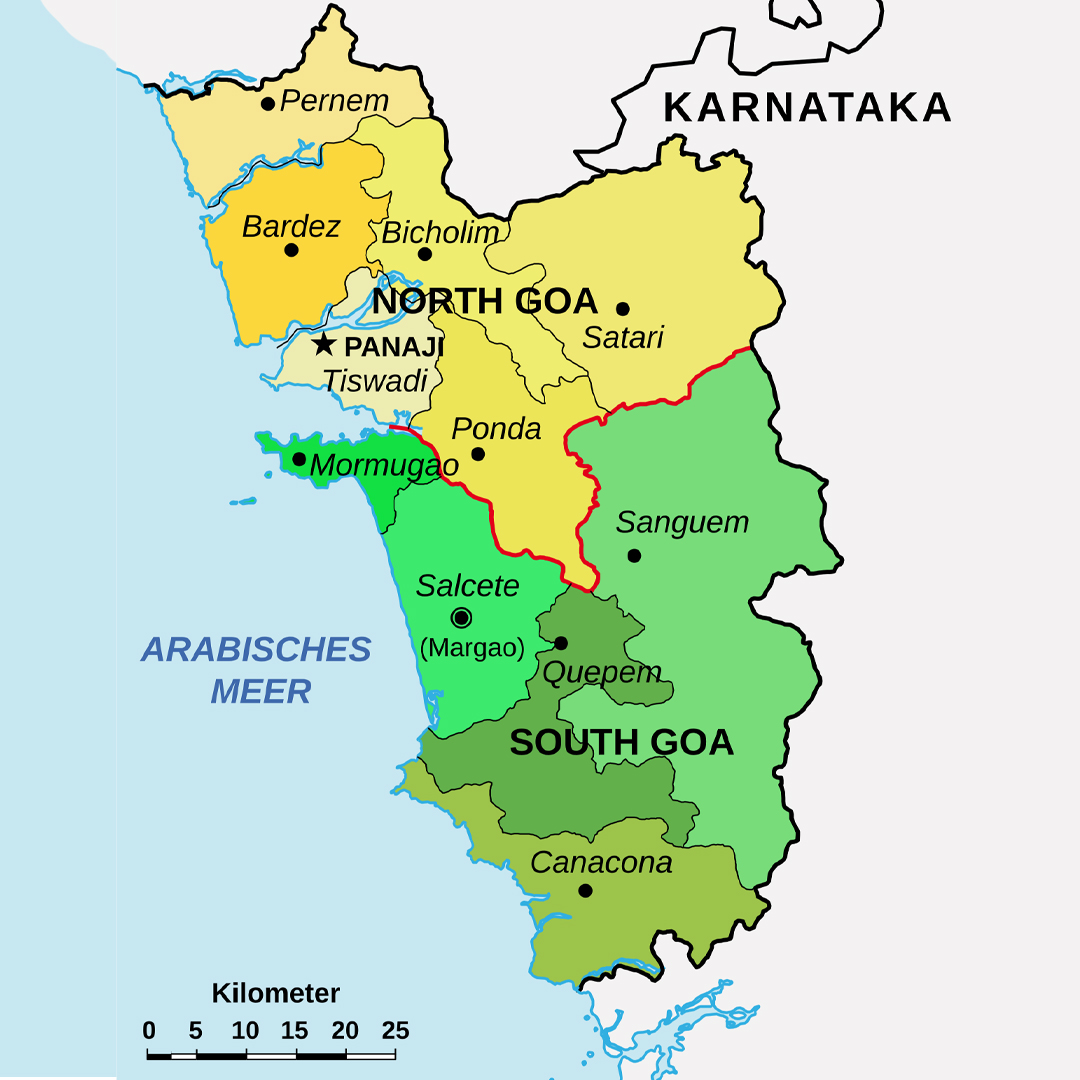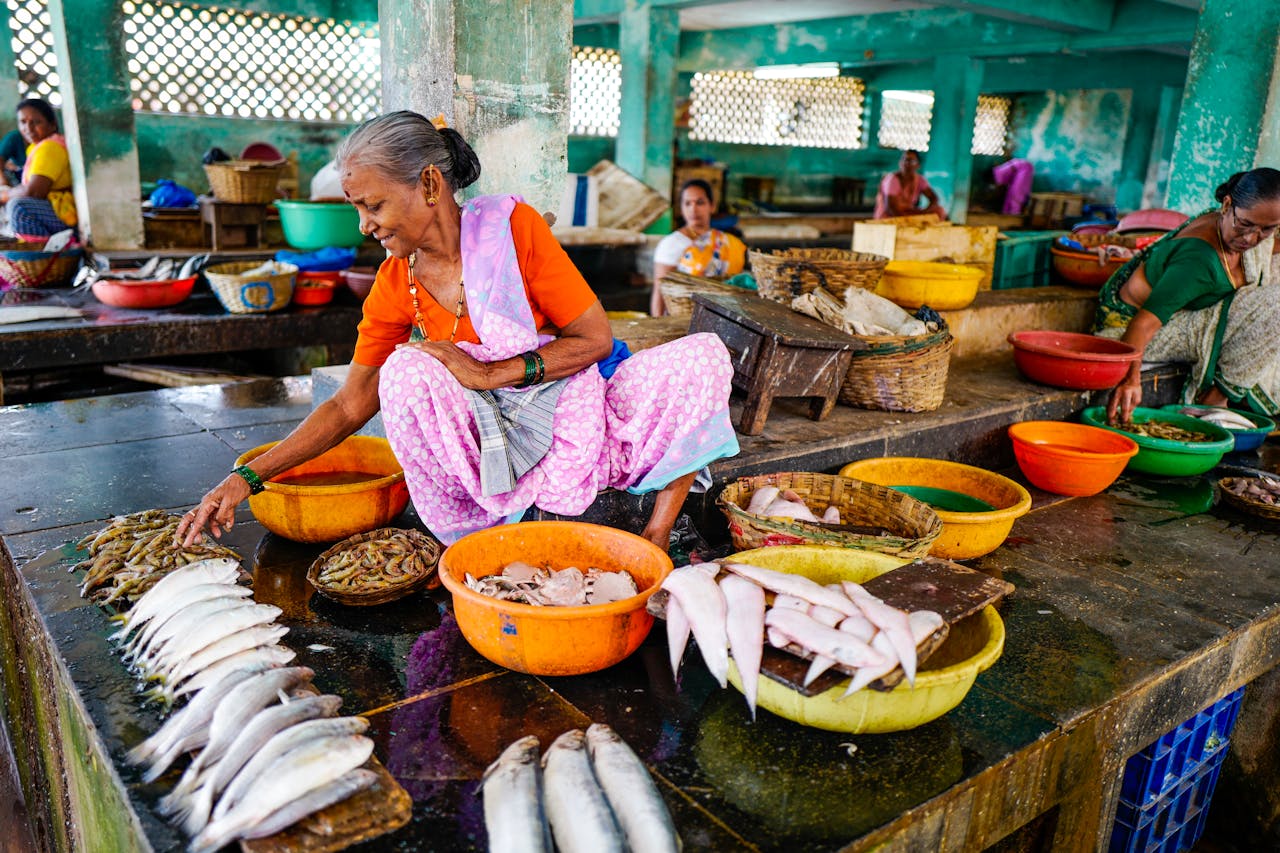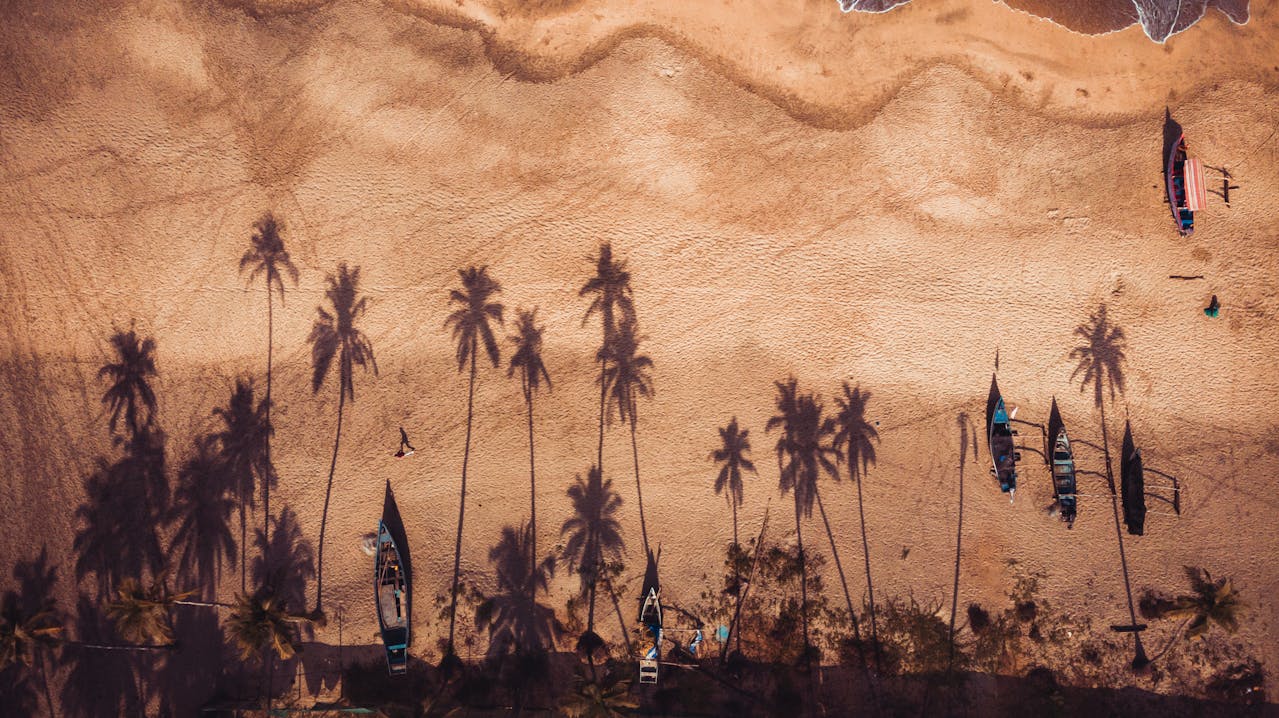
Located along the western coast of India, besides the Arabian Sea, Goa is a tourist destination suitable for all seasons. Panaji is the capital city while Vasco da Gama is the largest city of the state. Goa exhibits a distinct influence on Portuguese culture. The flourishing natural landscape, exciting lifestyle, and culinary specialities all serve the identity of Goa. Its heritage comprises an amalgamation of all the empires that ruled throughout its history.
Exquisite on its own, Goa is rightly called the “Rome of the East” and sometimes, “The Miami of India”. Below, we delve into the culture of Goa and explore the traditions, and lifestyle of the state.
Suggested Story: Goa Is Like Fine Wine; It Was Magical Then, It Is Magical Now!
History of Goa

Located on the western coast, Goa is the smallest state of India. Goa was once a rich trading hub that drew tradespeople, missionaries, and scholars from all parts of the globe. Among its earliest residents were Brahmins, mostly the Saraswats, who have been said to have migrated from North Indian River Saraswati banks. Over the centuries, Goa witnessed the rise and fall of several dynasties. It first came under the Mauryan rule in the 3rd century BCE, later falling into the hands of the Satavahanas from Kolhapur, and eventually, the Chalukyas of Badami extended their influence over the region.
Goa’s first wave of Muslim invasion came by 1312 but was temporary in that they departed by 1370. Fate took a different turn in the year 1510 when the Portuguese came by sea, their intention being to secure control over the spice trade. Goa was a suitable location for their base due to its natural harbors and broad rivers. The Portuguese established firmly and left their mark on the culture and buildings of the region by building iconic churches and forts. Their hold lasted for centuries before they were defeated by the Marathas in the late 1700s. Portuguese rule only ended in 1961 when the Indian Army reclaimed Goa and integrated it into the Indian Union.
Goa achieved statehood on May 30, 1987, as India’s 25th state under the leadership of Prime Minister Rajiv Gandhi. Natural language Goan Konkani was subsequently declared one of India’s 22 official languages. The state currently boasts the country’s highest per capita income with its economy being bolstered by fishing, agriculture, tourism, and mineral mining.
Suggested Story – The Lost Jewish Heritage of Goa
Goa Statehood Day

Goa Statehood Day, observed on May 30th, commemorates the moment in 1987 when Goa was officially granted statehood and became the 25th state of India. After more than two decades as a Union Territory following its liberation from Portuguese rule in 1961, the demand for statehood grew stronger, fueled by the region’s distinct language, culture, and identity. The transition marked a significant step in giving Goans greater political voice and administrative control. On this day, the state celebrates its unique blend of coastal charm and cultural richness through various programs and local events. Schools, institutions, and communities come together to reflect on Goa’s progress and aspirations. It’s not just a political milestone—it’s a celebration of what makes Goa proudly Goan. The day serves as a reminder of the region’s journey toward self-determination and cultural preservation.
Architecture in Goa

The buildings in Goa are reminiscent of the Portuguese who colonised the land in 1510, and the culture and aesthetics of Europe along with the native Goan architectural style is seen in its architecture. The gradually collapsing bungalow mansion, with its wood-iron balconies, shaded balcãos (spruced porches), oyster shell windows and central saquãos (inner courtyards), around which family life was historically revolving, is probably Goa’s most symbolic architectural type. Most of them were established around the beginning of the 18th century for their services to affluent Goan traders and officers. The buildings were built in a European style, but the components- red laterite stone, wood or terracotta and oyster shells in place of glass windows etc. were all locally sourced.
Culture & Traditions of Goa

As an aftermath of colonial rule, the culture of Goa is a blend of Portuguese and Indian. The state is brimming with the vivacity of joyful spirits, and such is reflected in the people and their lifestyle. An easy preference for tourists to shed away the moulds of grinding metropolitan life, Goa is imbibed with the atmosphere of holiday and freedom.
Goans, a term beloved by the people of the state, practice ‘siesta’, wherein they shut down their shops and give in the afternoon rest, from 1 to 4 pm. The community is inclusive, and the friendly natives come together despite religious differences. Such is evident during celebration and worship. The colourful traditions of the state are portrayed in their folk performances, including music and dance.
Languages in Goa

Goa is a melting pot of culture, and this discovery is richly resonant in its multilingual heritage. The state welcomes residents from different ethnic groups, each enriching the language fabric. Although the most widely spoken are the Marathi and Konkani dialects, which have a rich resonance in the local subconscious, the linguistic base goes far beyond this.
In addition to these, there is a large segment of the population that also communicates in Hindi, English, and Portuguese directly as a legacy of having been a colony. This multilingualism creates a special environment where communication does not face cultural barriers, and ideas and traditions can be shared freely between residents and visitors.
Religion in Goa
In Goa, religions play a significant component in everyday lives with three major ones being Hinduism, represented by around 60% of the people, Christianity (30%) as well as Islam (10%).
Prior to Goa being colonised by the Portuguese in the 16th century, Hinduism was the state’s main religion, but following the invasion, the Portuguese imposed Roman Catholicism on the citizens. When Goans again had the freedom to select their religion, Christianity had been extensively established throughout the State.
Goa has become a highly religiously tolerant state. The Hindus, the Christians and the Muslims live contentedly together. In fact, from Renaissance architecture in Goan temples to Christian prayers recited in Konkani, they have taken on many similar characteristics. You will certainly observe both religions dwelling happily next to one other while you traverse the state. Next to elaborate temples of Hindu origin and the mosques, Christian churches also tower tall.
Goan Cuisine

The Goan cuisine comprises Portuguese, Hindu, and Islamic styles of cooking. This amalgamation results in a grand variety of rich, delicious dishes. Seafood is a common delight for the people, with its spread of deftly spiced and seasoned dishes.
Vinegar and coconut milk are used a lot in cooking. European spices are often included in Indian curry dishes. Rice and fish curry is a staple meal of the Goans.
Khatkhate is a vegetable stew that is prepared during festivals. It contains fresh coconut, spices of Goa, and at least five vegetables.
Other special dishes include pork preparations like xacuti, Vindaloo, Chorisa, and Sorpotel. Bebinca is a popular egg-based sweet dish that is famous during Christmas celebrations. Alcoholic beverages like the Cashew Feni and the Coconut Feni are popular among the Goans.
Traditional Dress of Goa

The tropical climate of the state makes light cotton clothes to be the most suitable. The Catholic women don dresses and gowns while the Hindus prefer sarees called ‘Nav-vari’. Some of the other significant costumes of the Goan culture include Pano Bhaju, Kashti, and Valkal. Men, on the other hand, usually wear shirts and trousers. Bright coloured shirts with half-pants and bamboo hats are representative of Goa among the tourists. The famous Goa Carnival exhibits the plethora of bright colours and costumes that are found in the state.
Dance and Music of Goa

The cultural heritage of Goa abounds with folk music that blends harmoniously with influences of Western compositions. The Portuguese methods of incorporating violin, piano, and mandolin are utilized by Goan musicians. Dekhni, Mano, Fugdi, and Corridinho are some prestigious folk dances of Goa. Incredible singers as the likes of Emiliano D’cruz, Prince Jacob, Rosario Rodrigues, Souza Boy, M.Boyer, Tony King Alfred Rose, Kid Boxer, and J. B. Rod hail from Goa.
Art and Craft of Goa

Goa is filled with a performing arts culture and traditional state-specific skills. The skilled craftsmen develop their skills to create beautiful handicrafts from natural products like sea shells, clay, paper, bamboo, and brass. They are extremely sought after by tourists for their beauty and uniqueness. The most symbolic of them are Azulejos tiles—hand-sewn blue Portuguese-style tiles representing Goa’s colonial past.
Brassware and terracotta, usually found at the renowned Anjuna flea market, are the quintessential examples of Goan workmanship. In addition to crafts, Goa’s cultural vibrancy shines through its folk dances like Fugdi and Dekhni, frequently performed during festive occasions. For those seeking meaningful souvenirs, Mapusa and Panjim markets offer a wide variety of Goan handicrafts perfect for gifts or keepsakes.
Fairs and Festivals of Goa

Festivals of Goa are as lively as the state itself, one can experience the blend of Portuguese and local culture. Festivals such as the Shigmo festival, Kalas Utsav, Shri Shanta Durga Jatra, Novidade, Bonderam Festival, and Goa Carnival showcase the spirit of Goan culture with effervescence. The Jatra feasts involve a grand procession of ‘palakhi’ or palanquins where innumerable people participate. The occasions of Christmas and New Year celebrations are great attractions for tourists.
Occupation of Goa

Most Goans are engaged in employment and organisations based on agriculture, fisheries and tourism. Paddy is the main crop. The local farmers work in lush green paddy fields in the monsoons throughout the day. Many farmers also cultivate cash crops such as coconut, cashews, mangoes, areca nuts pineapples, jackfruit and many more tropical crops. Many people in the summers brew the famed Feni tipple. Another important business in Goa is fishing. Fish are the lifeline of the state’s diet, having 66 km of shoreline, 11 inland rivers and 42 tributaries traversing the state.
Tourism has become one of the major players in the state’s economy. Many Goans, therefore, work in tourism-related industries such as guides for tourists, taxi drivers, self-owned tourism companies, and so on. Baking is another Goan custom that gives a job to many Goans. In every community there are traditional bakers from Goan, making of Pao, Polis and other Goan bread.
Adventure in Goa

Two of the most popular sports that people of Goa love and participate in are football and bullfighting. Water sports like rafting, scuba diving, snorkeling, banana boat ride, kayaking, jet ski, speed boating, kite surfing, and Ringo ride are popular attractions of Goa. It is the only state in India where gambling is legal, and thus, conveniently boasts of a flourish of fine casinos.
Nightlife in Goa

The nights of Goa come to life in the pulsating beats of a land that never sleeps. The parties and celebrations pose as bright and youthful destinations for people all over the country and even the world. Lights, music, and an environment of no-worries-of-the-world are sought after at such hours of the night.
Tourism in Goa

With its sweeping beachside, enriching folk music, and dance, and the heritage architecture of forts and churches. Goa is an extremely popular tourist attraction among Indians and foreigners alike. It’s perfect for relief from the demands of life and relaxing the spirit. Therefore, tourism in Goa is its primary industry that thrives all year long.
Goa has innumerable places of worship. The Basilica of Bom Jesus, St. Cathedral Church, and Our Lady of Immaculate Conception are some of the prominent churches. Mangueshi Temple of Lord Shiva, Shri Kamakshi temple, and the Mahalasa Temple are renowned among Hindu devotees. Safa Masjid at Ponda and the Jama Masjid are significant mosques.
Besides its religious structures, Goa’s architecture is also reflected in forts such as Reis Magos Fort, Mormugao Fort, Rachol Fort, and Naroa Fort.

Among its attractive beaches, one must visit Candolim Beach. Bambolim beach, Baga Beach, Sinquerim Beach, Vagator Beach, Palolem Beach, Agonda Beach, and Arambol beach are equally good.
Other sites of natural wonders include the Mayem Lake, Dudhsagar Falls, Kesarval Springs, Arvalem Falls, and Kuskem Falls.
Goa also is home to various animals and birds, and its most famous wildlife sanctuaries include Bondla Forest, Bhagwan Mahavir Wildlife Sanctuary, Mollem National Park, and Cotigao Wildlife Sanctuary.
The state of Goa is defined by its vibrant colors and happening life. The people live in harmony and enjoy celebrations together. It’s an amazing place to forget all your worries and experience an excellent getaway.
Suggested Story: Here’s a Handy Goa Tourism Guide for the Solo Travellers Out There
FAQs on the Culture of Goa

-
What are the primary cultural influences in Goa?
Goan culture is largely a blend of native Indian traditions and some Portuguese influences, the product of its long history as a colony.
-
Which languages are generally spoken in Goa?
The most spoken language in Goa is Konkani, followed by Marathi as the second most spoken. Hindi, English, and Portuguese are common as well.
-
What distinguishes Goan cuisine, and can you provide a few of the popular dishes?
Goan cuisine is a spicy blend of Portuguese, Hindu, and Islamic cooking, which is renowned for seafood, coconut milk, and vinegar use. Some well-known dishes include fish curry and rice, Xacuti, Vindaloo, Sorpotel, and dessert Bebinca.
-
When is Goa Statehood Day celebrated?
Goa Statehood Day, celebrated on May 30th, commemorates the day Goa attained full statehood in 1987, marking its journey from a Union Territory to the 25th state of India, and is a day for celebrating its progress and identity.
-
What are some traditional dances and festivals traditionally celebrated in Goa?
Some of the most famous Goan folk dances are Dekhni, Mano, Fugdi, and Corridinho. Major festivals that are celebrated with great enthusiasm are the Shigmo Festival, Bonderam Festival, and the colorful Goa Carnival.
Few Lines on the Culture of Goa

- Goa: A kaleidoscopic tapestry where East and West tango in a dance of cultures.
- Its buildings whisper tales of Portuguese grandeur in laterite stone.
- Goan food is a spicy, sour, and sweet melody of varied influences.
- From Fugdi to Feni, Goan culture is a lively celebration of life.
- Religious harmony flourishes, with temples, churches, and mosques standing tall together.
- The smallest state with the largest heart for music, dance, and merriment.
- Goa Statehood Day commemorates its path to becoming a fully literate, self-sustaining state.
Conclusion
Goa, truly the “Rome of the East” and “Miami of India,” emerges as a captivating kaleidoscope of cultures, harmoniously blending its indigenous heritage with a profound Portuguese influence. From its distinctive architecture echoing colonial grandeur to its flavorful cuisine that tantalizes with a fusion of global spices, and from its lively folk dances and music infused with Western melodies to its effervescent festivals like the famous Carnival, Goa embodies a unique zest for life. The remarkable religious tolerance and inclusive spirit of its people foster an atmosphere of unparalleled warmth and freedom. More than just a tourist destination, Goa offers an immersive experience, inviting all to partake in its vibrant traditions, artistic expressions, and the joyful, laid-back lifestyle that makes it an unforgettable getaway.








Interesting indeed
The backside of Indian Diaspora and history
A great country with a multitude of cultures and religions.
Thanks Ashok 🙂